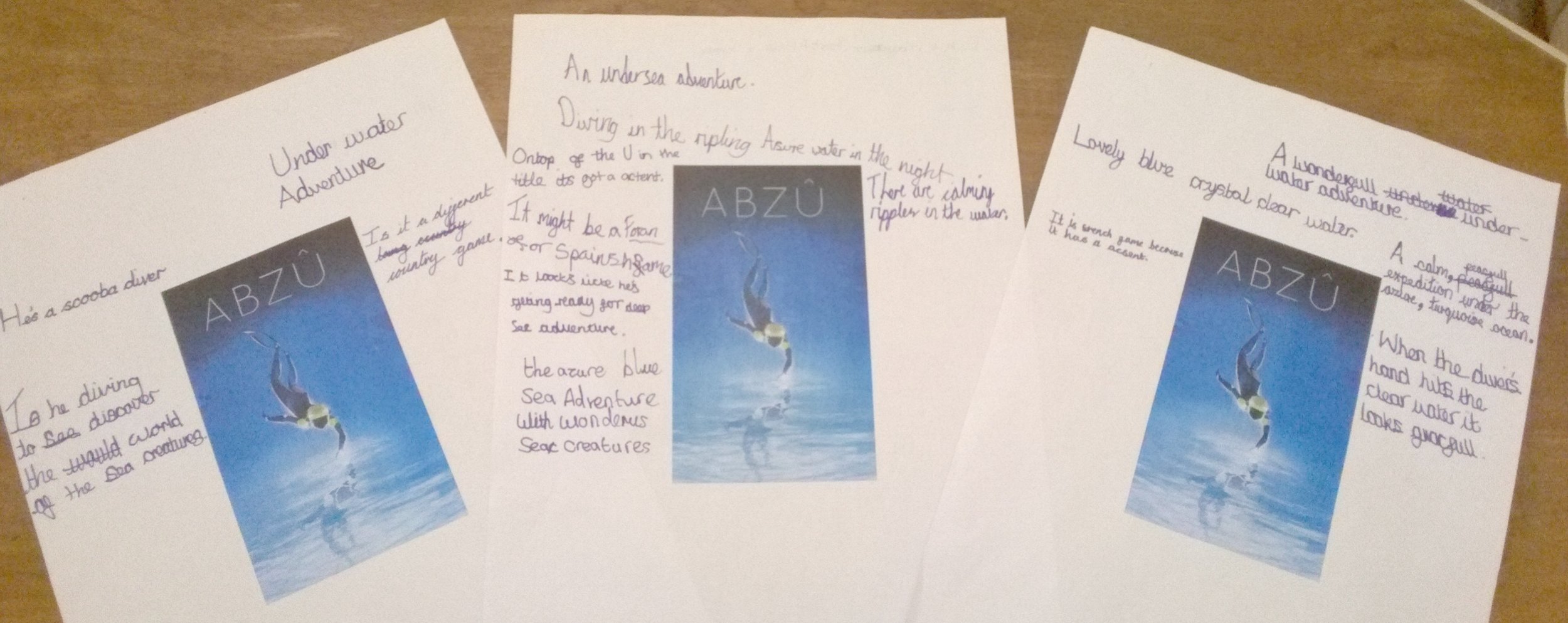At our school we have been using the game Abzu as a stimulus for writing. I've spoken before on numerous occasions about how video games can be used as a contextual hub for learning and in the past we have used some games to help on the learning journey.
I have played and completed Abzu in my own time and I enjoyed the experience, the fact that the story line and its meaning were ambiguous, its visual style abstract and its music soothing and dramatic made me feel that this would be a good game with which to engage the pupils. At its core Abzu is a diving game but this is incredibly reductive as in the game most of the time is spentswimming with the myriad of underwater creatures, but it's distinctive visual style of flatter shapes, flowing lines and an expressive use of light and colour make it stand apart from the more uniform style of games like Endless Ocean, another diving game which I have used previously.
In Abzu you play a silent diver and explore a strange, underwater realm. In terms of gameplay, it's fairly simple as you swim and interact with a few mysterious objects. Because the game itself has minimal HUD on screen all you see are the gorgeous visuals with the natural environments in lush bright colours giving way to mysterious sunken ruins with strange hieroglyphs, which seem readable but for the need of a Rosetta stone equivalent.
But there are no question marks about Abzu's beauty. It's not so much that the individual elements are all that astonishing, but the way they're orchestrated, with the shoals of beautifully animated fish, the slowly undulating vegetation, the areas of coloured light and shadow, regularly takes your breath away. At its best the union of music and visuals can be absolutely magical.
In our lesson we used Abzu to write a descriptive piece of writing. The children were presented with an image of the cover and had to predict what the game was about.
Then we started the game where the diver is seen to be floating on top of the ocean, motionless and with its eyes closed. With the click of a button the eyes opened and the children gasped in delight as I ascended to the top of the sea, all around there was ocean and glimmers of seaweed in the distance.
We dove down into the waters and children started to note down describing words on their image proforma; azure waters, crystal clear sea, shimmering sparkling waters, refracted light etc. We then gently swam towards a shoal of brightly coloured fish and described their movements and how they reacted when our diver moved near; ruby red fish swam carefree, swishing their tail from side to side, the fish quickly darted away startled as the stranger came near etc We then got the diver to hold onto a giant fish and glided through an opening in the rocks and the children gasped in delight as the dark cave gave way to a bright green seascape full of wonderful creatures; verdant undulating seaweed gently swayed from side to side, shoals of fish swam in tight circles to protect each other etc
Having played just the first 15 minutes of the game the children were entranced and engaged. They produced wonderful wordbanks of phrases and ideas which they shared made improvements upon. After I showed the children the scuba diver poetry scene from Bridge to Terabithia and we discussed why this short poem was so effective in conveying the emotion of what it is like to be underwater.
The children were inspired and then spent the next 30 minutes working in pairs writing and refining their descriptive sentences on their whiteboards and transferring into their paper. The children shared what they had done and constructive feedback was provided by their peers.
For a short sequence of lessons this was a great way to engage the children but I know that this could be part of a much longer teaching sequence and next year I hope to plan it in for our underwater themed topic using the plans I used with the book Dougal's Deep Sea Diary and the old Wii game Endless Ocean but updating it for this current generation software.

















